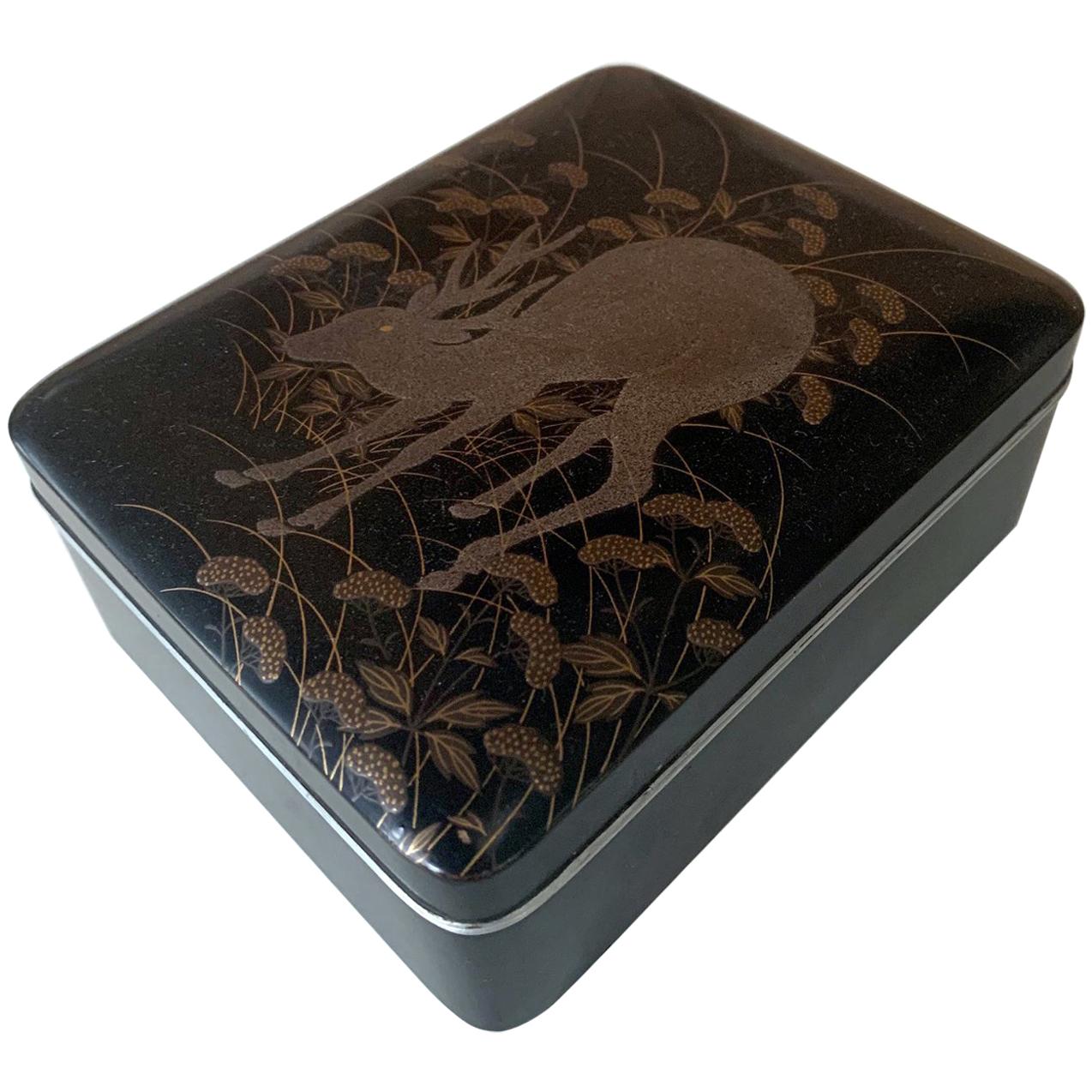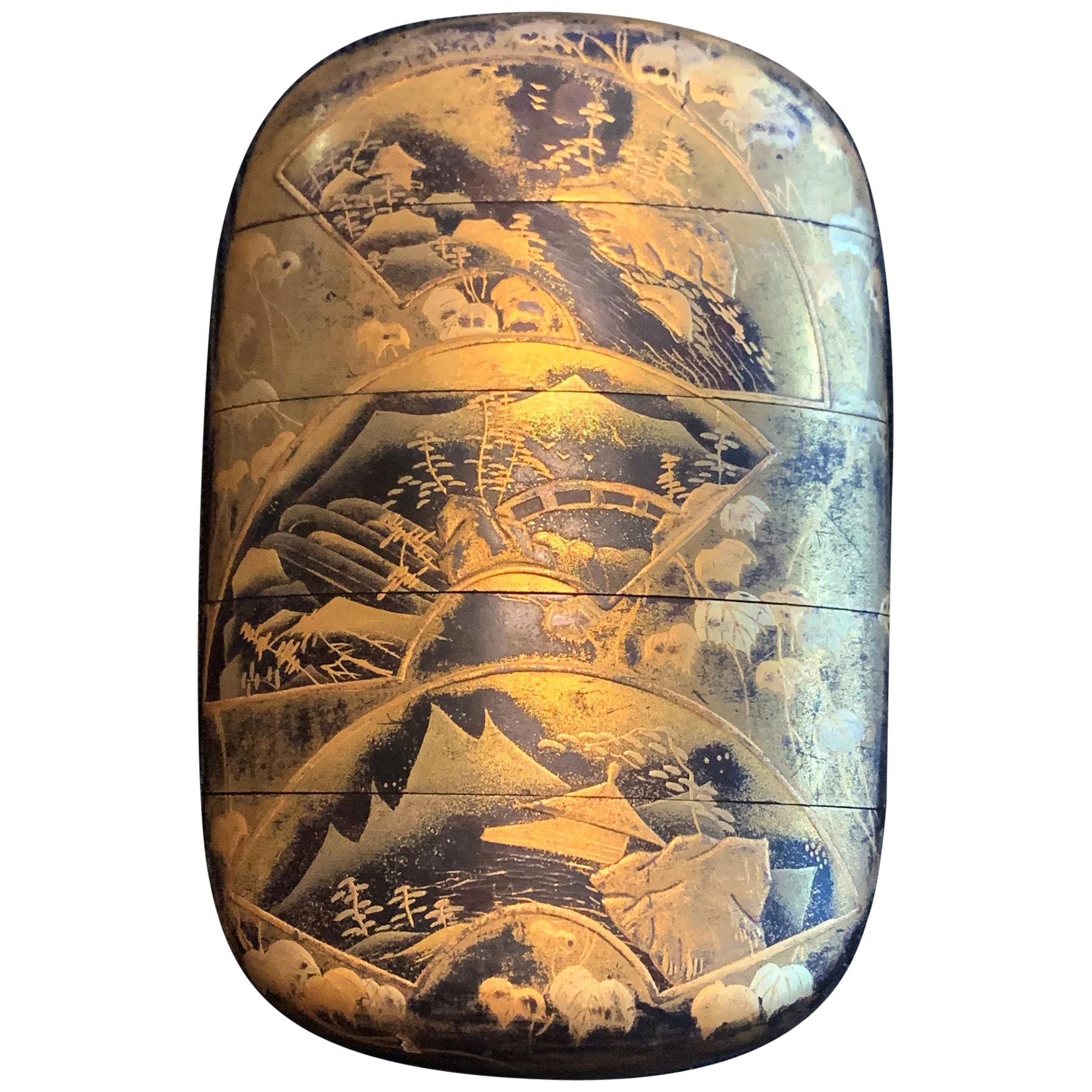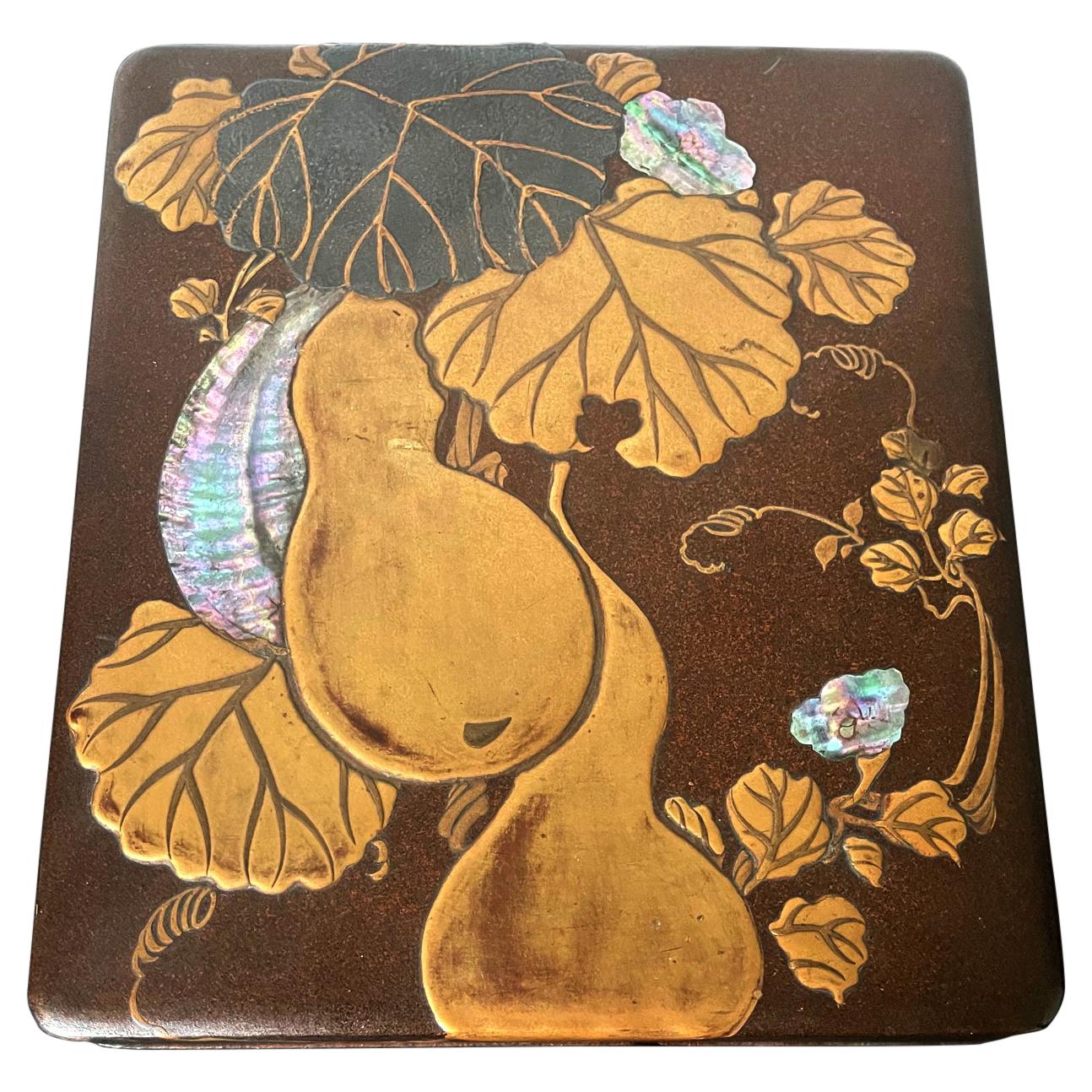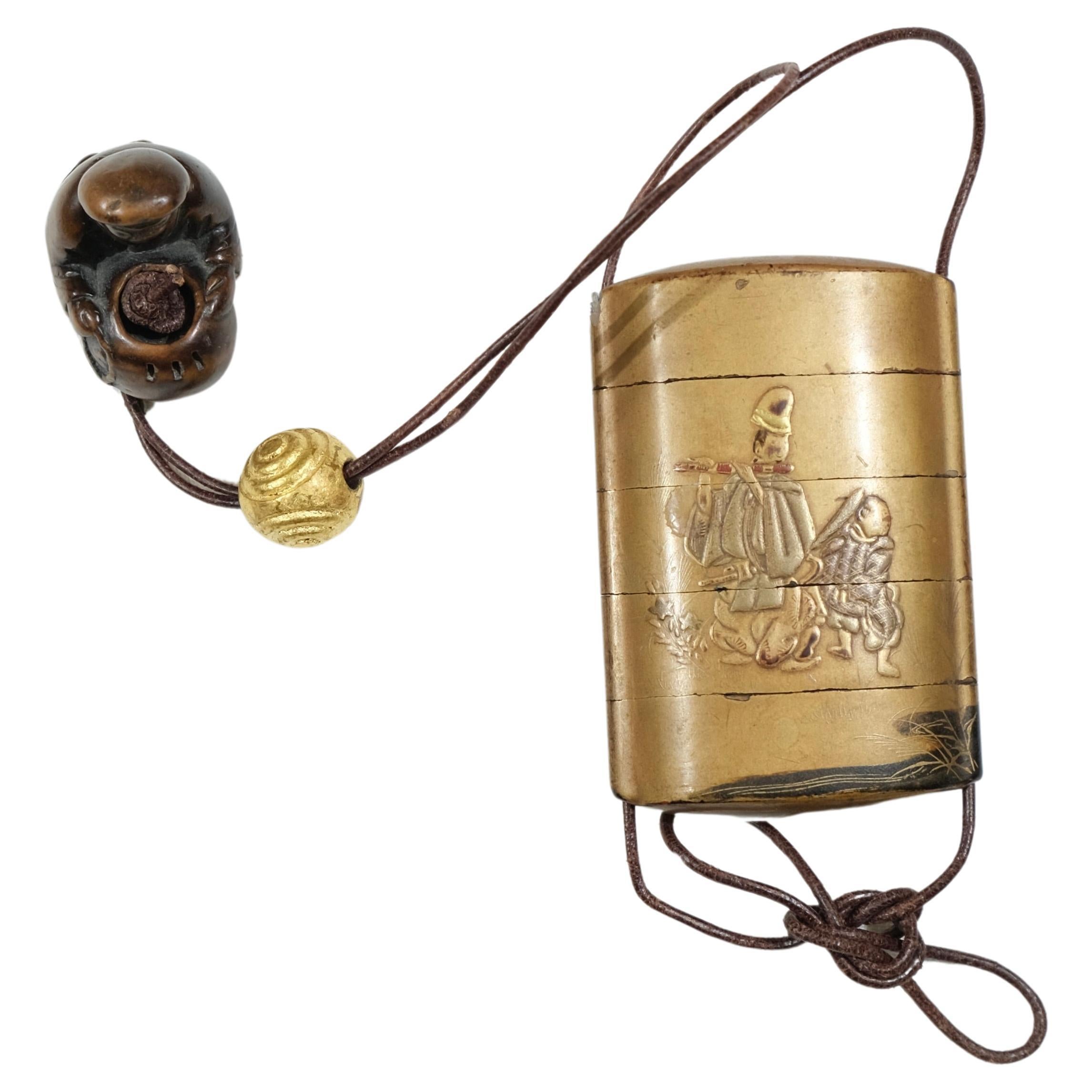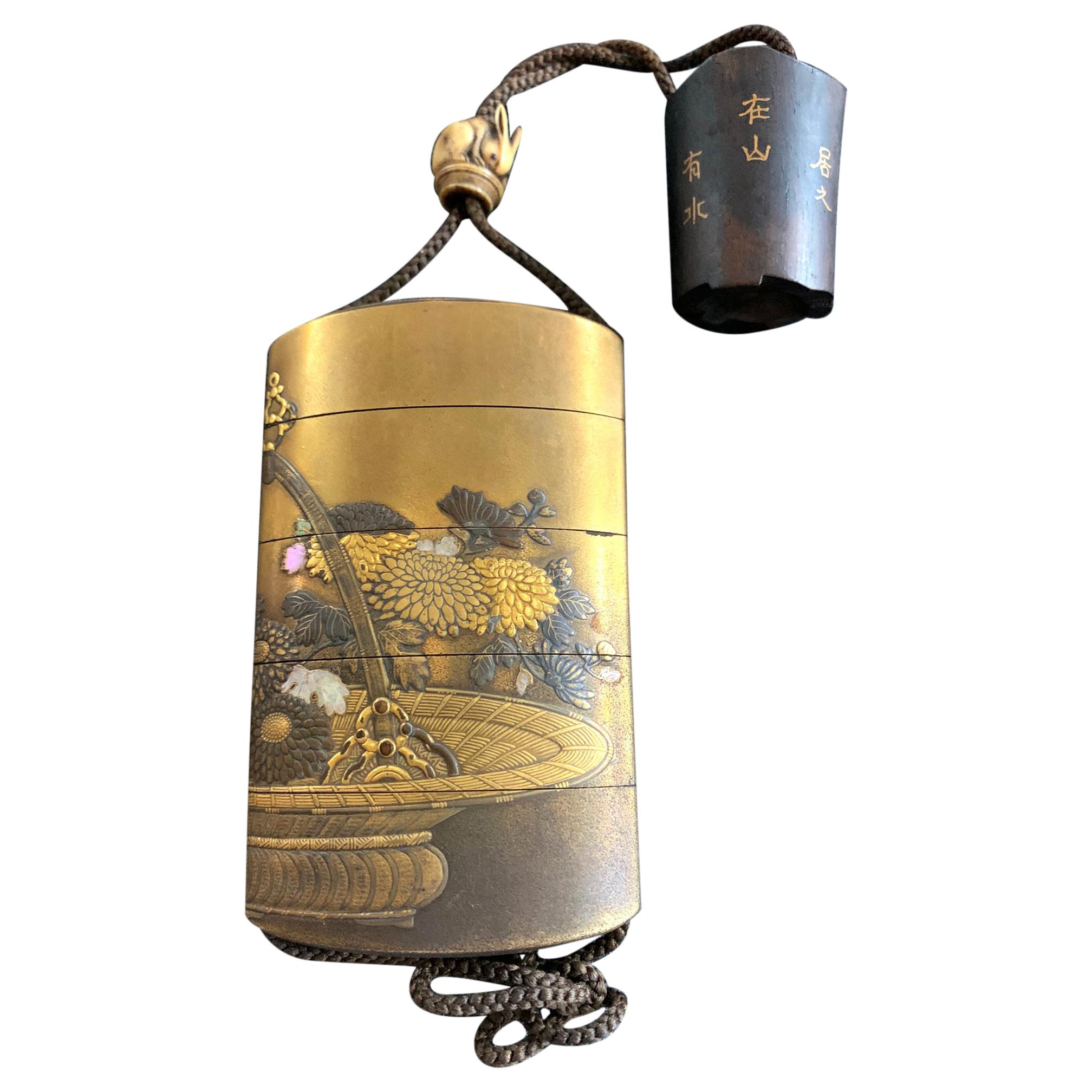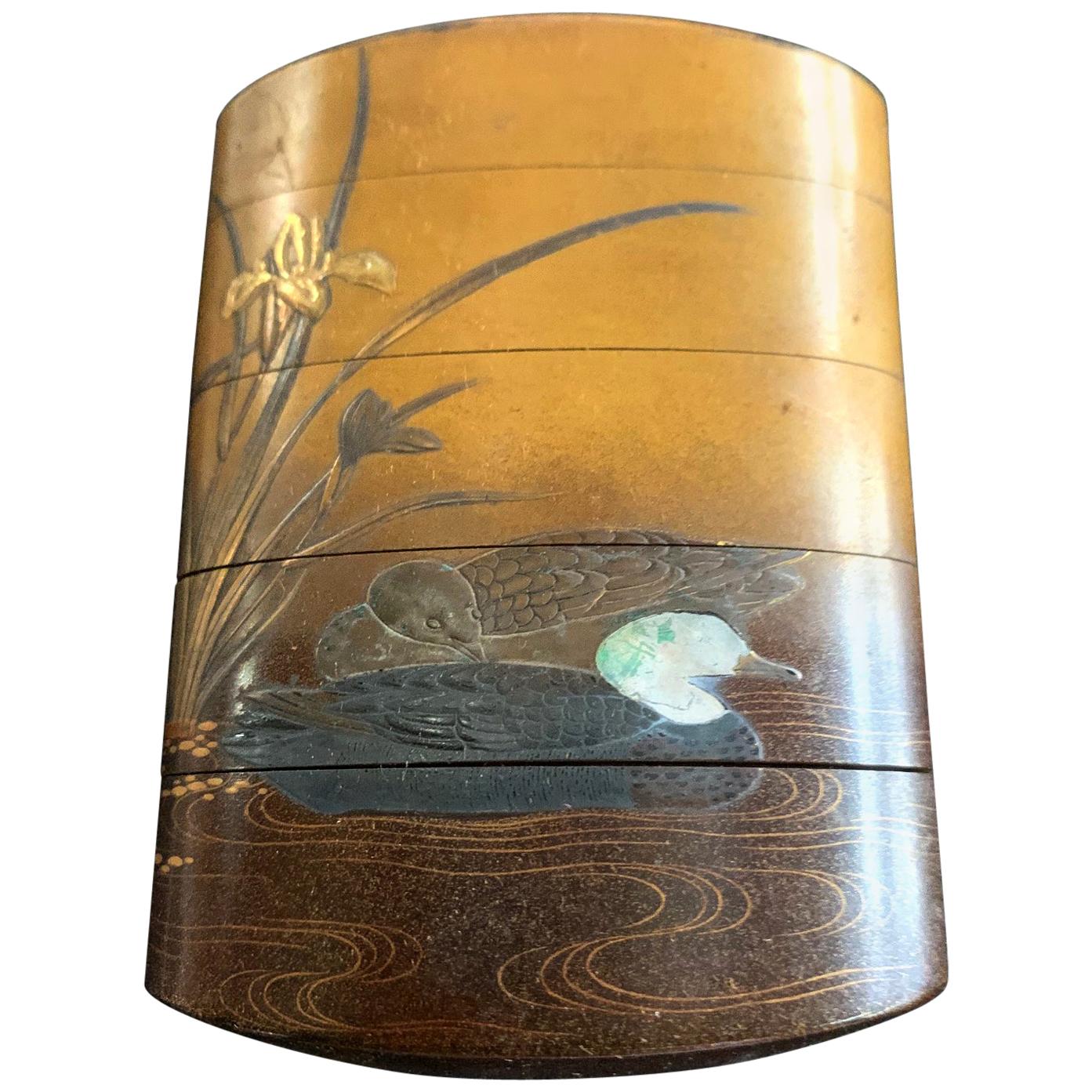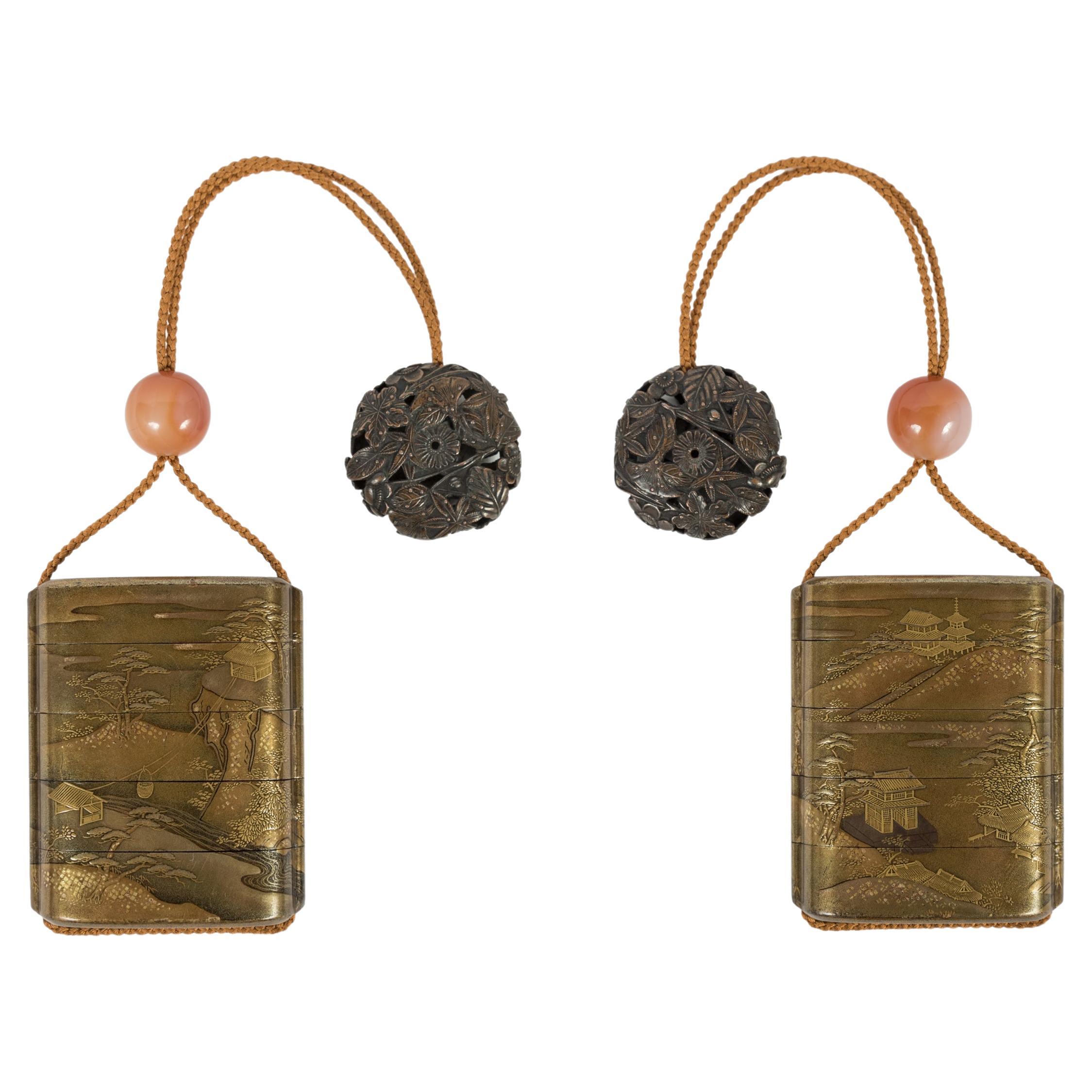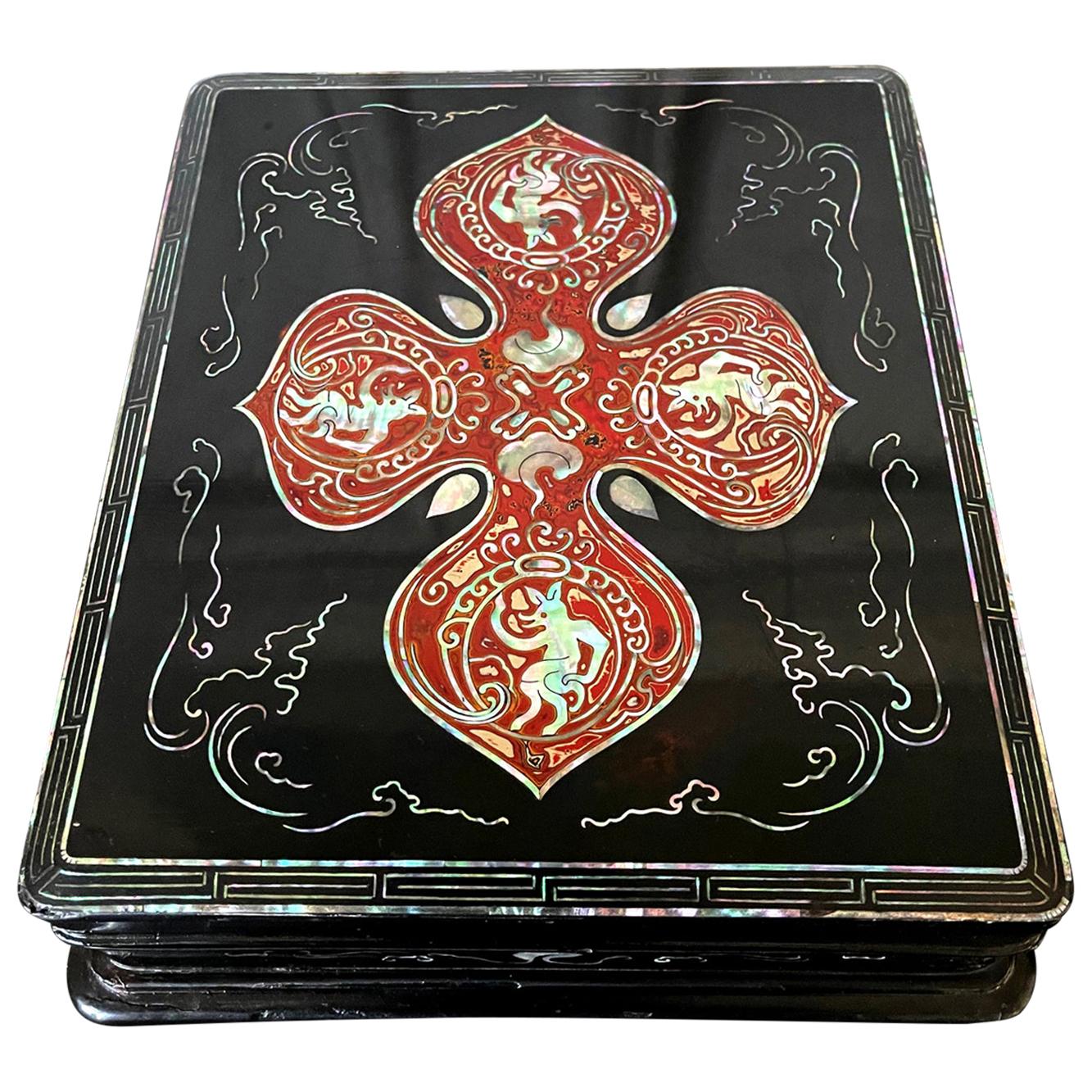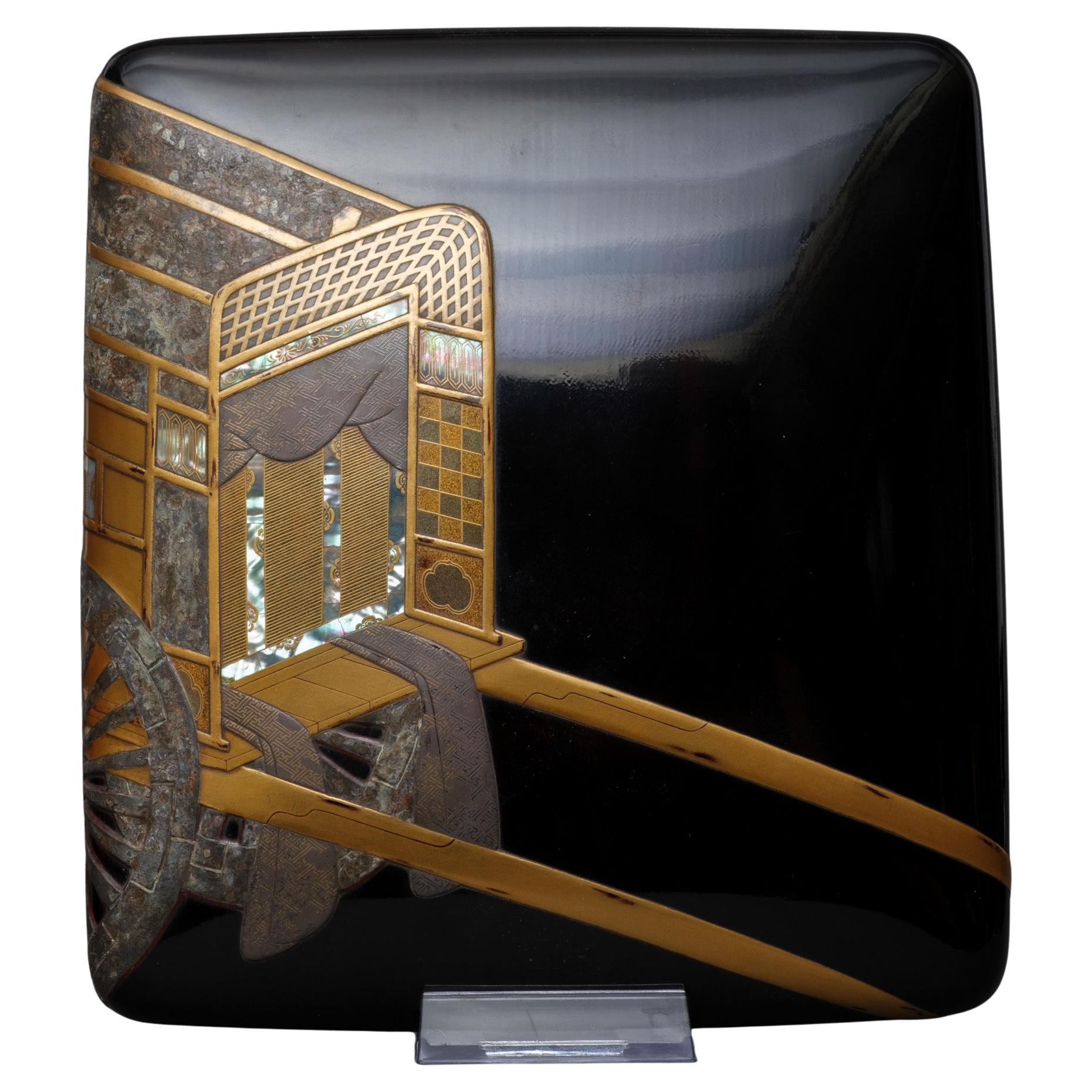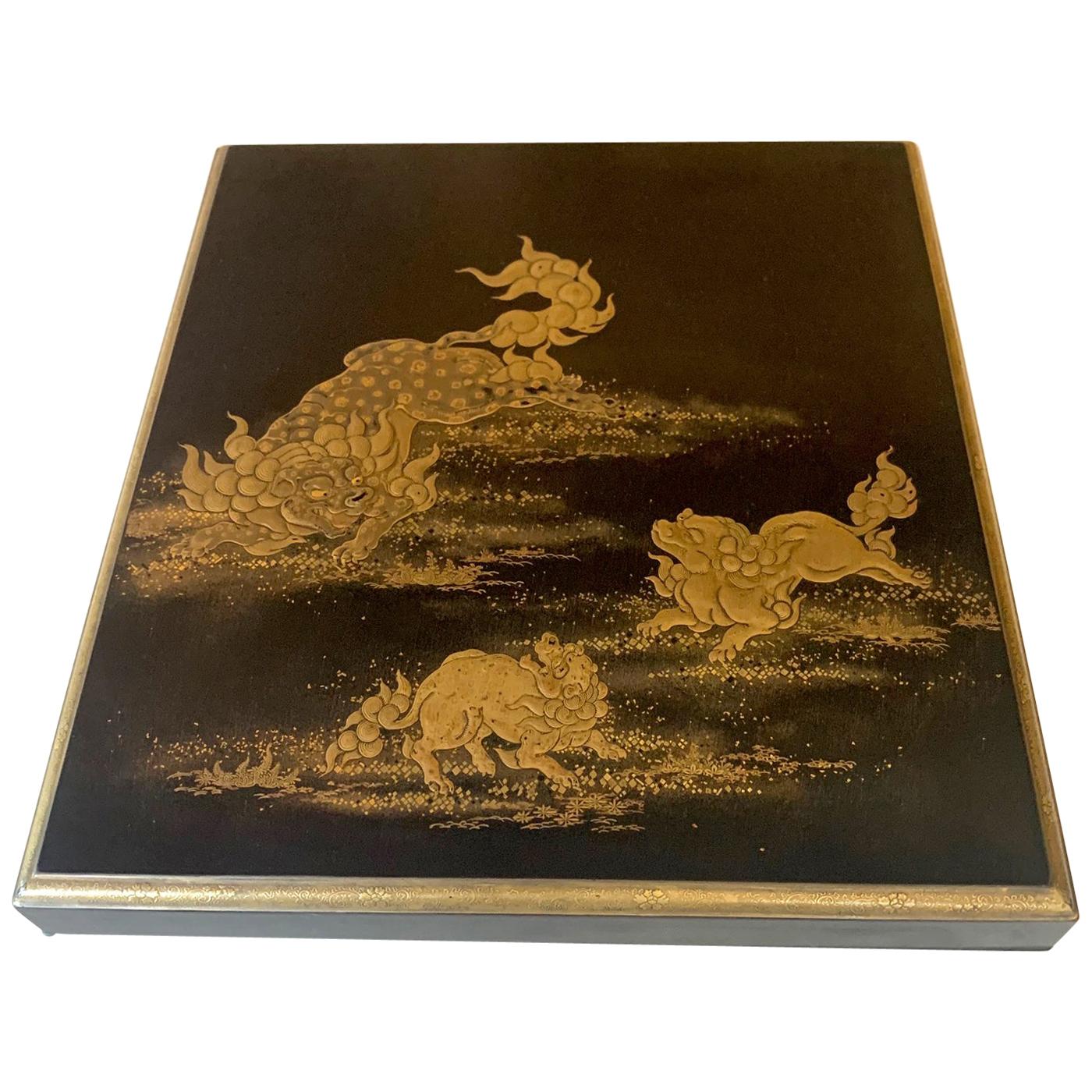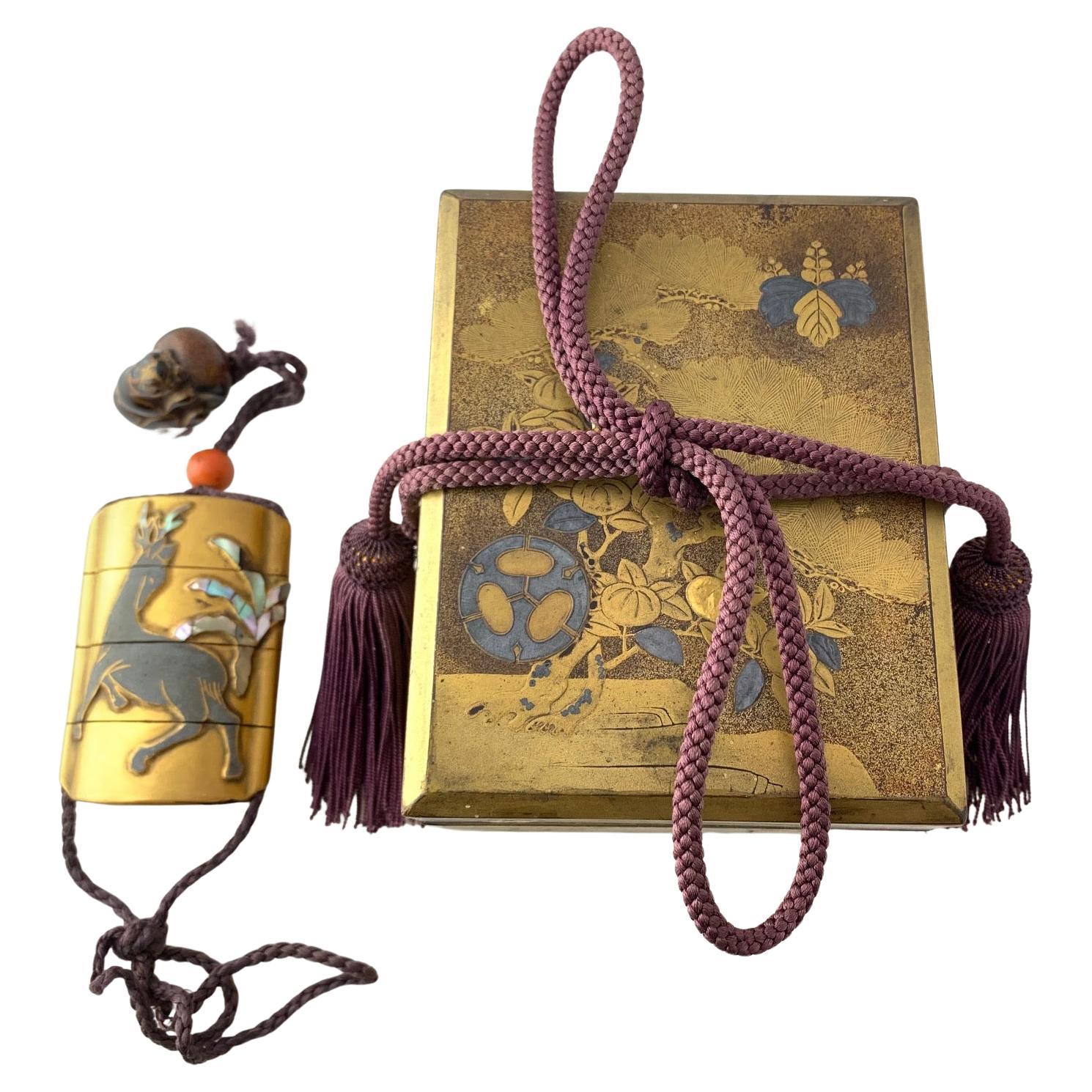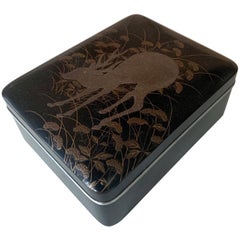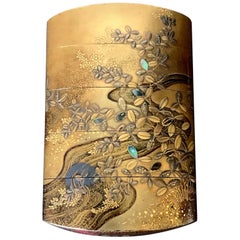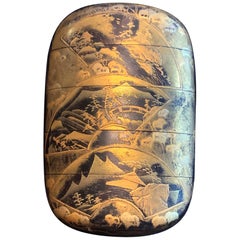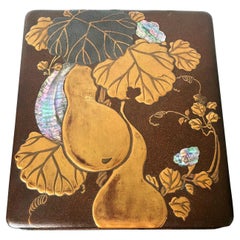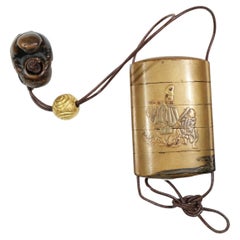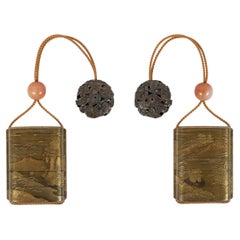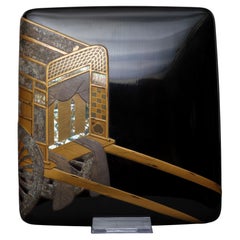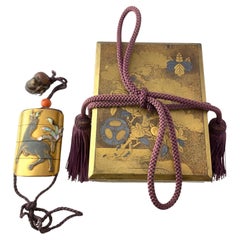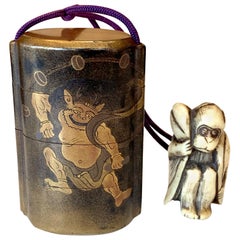
Japanese Lacquered Inro and Netsuke with Raijin Rinpa School
View Similar Items
Want more images or videos?
Request additional images or videos from the seller
1 of 12
Japanese Lacquered Inro and Netsuke with Raijin Rinpa School
Price:$2,200
$2,800List Price
About the Item
- Dimensions:Height: 3 in (7.62 cm)Width: 2 in (5.08 cm)Depth: 1 in (2.54 cm)
- Style:Japonisme (Of the Period)
- Materials and Techniques:
- Place of Origin:
- Period:
- Date of Manufacture:19th Century
- Condition:Wear consistent with age and use. Fine antique condition, with minor surface wear. Color fading on the cord.
- Seller Location:Atlanta, GA
- Reference Number:1stDibs: LU945021024662
About the Seller
4.9
Platinum Seller
Premium sellers with a 4.7+ rating and 24-hour response times
Established in 2006
1stDibs seller since 2010
562 sales on 1stDibs
Authenticity Guarantee
In the unlikely event there’s an issue with an item’s authenticity, contact us within 1 year for a full refund. DetailsMoney-Back Guarantee
If your item is not as described, is damaged in transit, or does not arrive, contact us within 7 days for a full refund. Details24-Hour Cancellation
You have a 24-hour grace period in which to reconsider your purchase, with no questions asked.Vetted Professional Sellers
Our world-class sellers must adhere to strict standards for service and quality, maintaining the integrity of our listings.Price-Match Guarantee
If you find that a seller listed the same item for a lower price elsewhere, we’ll match it.Trusted Global Delivery
Our best-in-class carrier network provides specialized shipping options worldwide, including custom delivery.More From This Seller
View AllJapanese Rinpa Style Lacquer Box Meiji Period
Located in Atlanta, GA
A black lacquer tebako (hand box) with maki-e decoration and silver trim, circa late 19th century, Meiji period. The surface of the lid features a Rinpa style maki-e paint depicting ...
Category
Antique 1890s Japanese Japonisme Lacquer
Materials
Wood, Lacquer
Fine Japanese Lacquered Inro with Inlays by Kajikawa
Located in Atlanta, GA
A Japanese four-case lacquer inro by a member of Kajikawa family circa 19th century (late Edo to early Meiji period). It depicts a nocturnal scenery of a meandering stream surrounded by bush clovers, where a full moon is reflected on the water. It was masterfully decorated in gold and silver maki-e using a combination of techniques including takamakie, togidashi and kirigane as well as aogai (abalone shell) inlays. The stream was set between the slightly elevated banks, adding to this piece a already strong three-dimensional composition. The interior was decorated in gold nashiji. It was signed on the bottom "Kajikawa Zou" (made by Kajikawa and a pot seal centered with "Ei" in Kanji. In one of the compartment, there is a katakana mark, appears to be a name, possibly the owner.
Kajikawa clan was one of the most famous lacquer artisanal family established in the 17th century. Many well known members over the generations produced lacquer art in a wide range of formats, but two third were signed only with the family name such as this one. It is therefore not possible to pinpoint the exact author of this piece.
Provenance: This inro was purchased as lot 349 in Christie's New York sale Japanese...
Category
Antique 19th Century Japanese Japonisme Lacquer
Materials
Shell, Wood, Lacquer
Fine Japanese Lacquered Inro by Yutokusai
Located in Atlanta, GA
A four-case lacquered Japanese inro by Yutokusai (Gyokkei), a lacquer artist active from 1845-1900 (end of Edo to Meiji period). The slightly round inro features a very intricate design with three unfolded fans on the front and two on the back: each reveals a vignette landscape scenery, likely real places in Japan. Using a combination of hiramaki-e and slight takamaki-e, the artist deftly created the pictures with fine details, rendering the inro as a miniature artwork...
Category
Antique 19th Century Japanese Japonisme Lacquer
Materials
Wood, Lacquer
Japanese Rinpa Style Lacquer Ink Stone Box Suzuribako
Located in Atlanta, GA
A Japanese writing box with ink stone (known as Suzuribako) with exquisite maki-e decoration circa late Meiji to early Taisho period (1890s-1930s)...
Category
Early 20th Century Japanese Japonisme Lacquer
Materials
Wood, Lacquer
Antique Japanese Inro by Shigehide Edo Period
Located in Atlanta, GA
This exquisite four-case lacquered inro was dated to the latter part of 18th century to early 19th century (Edo period) and made by Shigehide. The opposite sides of the inro together features a lavish flower arrangement in a bamboo basket (ikebana). The detailed craftmanship was a true pleasure to behold. Mostly Takamaki-e (high relief) were used to texturize the delicate petals of the chrysanthemums, on which different shades of gold were used to create contrast. Raden (mother of pearl) shells were also used to highlight some leaves, rendering the piece an interesting balance of color and material. The interior was completed in a mottled gold finish. It was signed Shigehide on the bottom with a Kao. There is a small carved rabbit ojime bead...
Category
Antique Late 18th Century Japanese Japonisme Lacquer
Materials
Wood, Lacquer
Japanese Inro by Koma Koryu Edo Period
Located in Atlanta, GA
A four-case lacquered inro by Koma Koryu circa 19th century late Edo period. The inro features a pair of Chinese mandarin duck resting under a bundle of blooming irises on the pond. ...
Category
Antique 19th Century Japanese Japonisme Lacquer
Materials
Wood, Lacquer
You May Also Like
A fivepart Japanese lacquer inro with netsuke, late 19th c.
Located in Stockholm, SE
A nicely designed Japanese lacquer Inro with a wooden netsuke. The Inro with motives of a man playing a flute on one side and a creek on the other side. The Netsuke with signature.
Category
Antique Late 19th Century Japanese Lacquer
Materials
Lacquer
Gold Lacquer Inro Decorated with a Lake Landscape
Located in PARIS, FR
Inro with four gold lacquer boxes, decorated with a lake landscape. Accompanied by a bronze ryusa manju.
Small boxes formed of compartments that fit one on top of the other, inro (? ?) are traditional Japanese clothing...
Category
Antique Mid-19th Century Lacquer
Materials
Lacquer
Japanese lacquer suzuri’bako 硯箱 (writing box) with ‘Rinpa School’-style design
Located in Amsterdam, NL
Superb rectangular ‘Rinpa School’-style black lacquer suzuri’bako (writing box) with a slightly arched well-fitted overhanging cover with rounded corners.
The lid with a design of a gosho’guruma (ox-drawn carriage for Heian-era nobles) featuring golden hiramaki-e (low-relief lacquer design) and takamaki-e (high-relief lacquer design), inlays of lead and shiny mother-of-pearl (raden). The design continues along the sides.
The reverse of the lid decorated with two large curving pine trees (matsu) executed in the same way, but also with intricate dots of tiny pieces of inlaid blue mother-of-pearl along the golden trunk.
The interior shaped to hold various scholar’s accessories, including a partially gold lacquered inkstone (suzuri) and a bronze waterdropper (suiteki) shaped like a mythical minogame.
The interior inscribed ‘Hokkyô Kôrin zô’ (Made by Hokkyô Kôrin). Referring to the design being in style of the master Ogata Kôrin, but the actual lacquer artist is unknown. It is a homage to Kôrin by an artist that followed the school of Rinpa.
Including black lacquer wooden tomobako (tomobako).
The Rinpa School was a key part of the Edo period revival of indigenous Japanese artistic interests described by the term yamato-e. Paintings, textiles, ceramics, and lacquerwares were decorated by Rinpa artists with vibrant colours applied in a highly decorative and patterned manner. Favoured themes, which often contained evocative references to nature and the seasons, were drawn from Japanese literature, notably The Tale of Genji, The Tales of Ise...
Category
Antique 19th Century Japanese Lacquer
Materials
Brass, Lead
Japanese Gold Lacquer Inro with Deer Image, Ojime, Wood Frog Netsuke, Makie Box
Located in Point Richmond, CA
The Inro is comprised of three stacked compartments and features a deer motif with mother of pearl accents, an ojime and a wooden frog netsuke. Inros were used to store items like m...
Category
Antique 1890s Japanese Meiji Lacquer
Materials
Wood, Lacquer
Japanese Edo Period Igarashi School Long Lacquer Box, Tanzaku-Bako
Located in Austin, TX
A stunning Japanese Edo period lacquer tanzakubako, box for poem cards, late 18th-early 19th century, Edo Period, Japan.
Attributed to the Igarashi School, this box is masterfully ...
Category
Antique Early 19th Century Japanese Edo Lacquer
Materials
Mother-of-Pearl, Lacquer
Japanese lacquered Inro chrysantemum
Located in PARIS, FR
Beautifull Inro of three compartments made in kinji lacquer with an hiro maki-e
ornament chrysanthemum flowers of gold and silver lacquer. Inside is in fundame
lacquer.
Signed by J...
Category
Antique Mid-18th Century Japanese Lacquer
Materials
Lacquer
